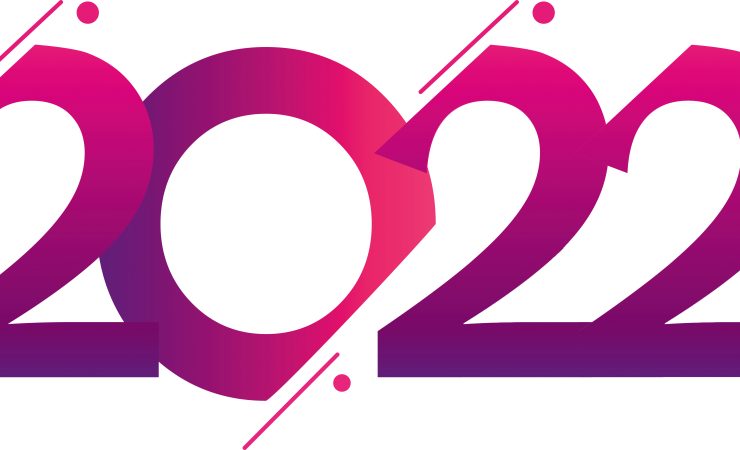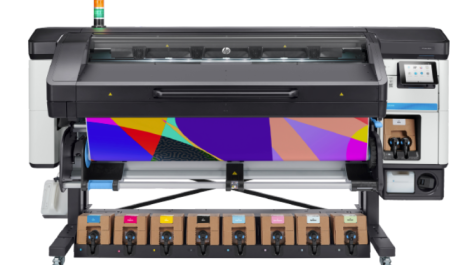Despite everything, 2021 turned out to be a busy year for commercial print. Ahead of 2022 Charlie Kortens spoke to some of the leading figures in digital print to find out what they thought 2022 had in store
FLEXPRESS
Steve Wenlock – managing director

What was the most important lesson you learned in 2021?
That it’s much easier to produce and sell a smaller, more specialised range to a larger customer base than it is a large range to a smaller customer base.
What will be the biggest challenge digital print faces in 2022?
Keeping up with technology has always been a challenge for digital and that’s unlikely to change. It can be an expensive risk going with new technology that then doesn’t do its job, but likewise not keeping abreast of technology can be a risk too.
What innovation, technology or development are you most excited to see more of?
Anything that lets my existing team achieve more within the same hours. Through AI and automation, we’ve hit our best ever monthly figures this year with 30% fewer staff.
You’ve often spoken about how print needs to sell itself based on its merits and not just price. What steps can the industry take to make this a reality in 2022?
Use print to sell print. At Flexpress, print is a major part of our marketing mix. Yes, we promote ourselves online and sell through our website, but we use print to convert a prospect into a client. It amazes me how many printers use e-shots and emails, but not print, to try to win new clients and then expect their clients to use print!
IMAGECO
Nathan Swinson-Bullough – managing director

What was the most important lesson you learned in 2021?
Stay positive, no matter what, and health is the most important thing in anyone’s life.
What will be the biggest challenge digital print faces in 2022?
Everyone knows how focused we are at Imageco on sustainability, in 2022 I expect to see more of a shift industry wide and more of a collective effort to change the way we work.
What innovation, technology or development are you most excited to see more of?
More in the way of sustainable material developments as many of the products in the wide-format print industry still can’t be recycled. There needs to be more collaboration between suppliers, printers, end users and waste management firms.
What is your organisation’s main goal for 2022?
We need to reset after the damage Covid did to us in 2020 and 2021. We have some interesting ideas for work in the community and further plans to look at carbon balancing our business. This aside we just want to work on what we do best and produce some really creative work. It’s going to be a busy 2022 and I am looking forward to it.
Is there a wider industry trend that you think is going to make a big impact over the next 12 months?
It’s all about sustainability, but that aside I think interior décor and fabric are still on the rise and we have seen more work in the areas of short run packaging and display.
ROUTE 1
Christie Darling – head of marketing

What was the most important lesson you learned in 2021?
For us, it was reiterating that the customer is central to what we do. Retaining our customer base through our team’s commitment and support has been incredibly important to us as well as making sure we’re always adapting to meet their needs.
What will be the biggest challenge digital print faces in 2022?
We believe that print will face struggles when it comes to longer run lengths as a consequence of ongoing aluminium shortages. There will be more demand for digital because of the shortfalls in the aluminium industry as printers become unable to maintain supplies.
What innovation, technology or development are you most excited to see more of?
Automation for sure. We believe that we will start moving towards lean manufacturing, switching up the way we manage jobs and increasing workflow systems to get orders through at more impressive speeds than we’re currently working at.
What is your organisation’s main goal for 2022?
Sustainability. Recycled products will be a large focus for our clients, looking more closely at how print can take on sustainable formats whilst remaining tactile and engaging.
Is there a particular market or application you think might ‘take off’ in 2022?
We’ve really seen e-commerce take off and we’ve seen a rise in popularity for combination products such as business cards that are accompanied by e-commerce products or stickers used to seal and complement packaging. Greetings cards soared in popularity during lockdown as well and we see these print products staying strong as we move forward.
CANON
Stuart Rising – head of commercial print, Canon UK

What will be the biggest challenge digital print faces in 2022?
Customer expectations will continue to evolve, with many consumers expecting 24-hour response times and higher quality standards. We can also expect further expansion in online ordering, and demand for integrated web-to-print solutions.
What innovation, technology or development are you excited to see more of?
New applications have helped spur developments in the home décor space and digital production of wallpaper is set to become even more popular. We also expect to see inkjet technology make further strides in the marketplace.
Is there a wider trend that you think is going to make a big impact in 2022?
Further increase in volumes, as more of society opens up and a sense of optimism returns. There is an opportunity for printers to take advantage of this wave of optimism and seek growth in areas such as visual communications. Sustainability is also set to remain high on the agenda.
Can we expect more Canon product products in 2022?
2022 promises to be another exciting year. Our customers are always at the heart of what we do, and we work closely with them to ensure we create solutions which will help them stay ahead of the curve.
EFI
Ken Hanulec – VP world-wide marketing

What was the most important lesson you learned in 2021?
No matter what kind of challenge is thrown at you, there is space for innovation and creativity to overcome such difficult situations.
What will be the biggest challenge digital print faces in 2022?
Perhaps the overarching challenge in any print or packaging application involves the supply chain for media. That challenge is not new, and we hope it will ease over the course of the year. But for now it is more important than ever before to drive the efficiencies and reduce waste and increase automation to minimise the time when a tight supply chain could impact the mix of products a print business is able to offer.
What innovation, new technology or development are you most excited to see more of?
There will be a concerted push forward in automation and digitally printed décor will continue to be an important trend in everything from corporate environmental graphics to home furnishings.
Is there a wider trend that you think is going to make a big impact in 2022?
In terms of pure growth in digital, it is hard to bet against corrugated. The e-commerce trend driving corrugated is not slowing.
EPSON
Phil McMullin – UK sales manager, Pro Graphics

What is your organisation’s main goal for 2022?
I am afraid it looks much like a repeat of 2021 with challenged product availability putting upward pressure on prices, certainly for the first half of 2022.
What will be the biggest challenge digital print faces in 2022?
Epson continues to invest heavily in R&D, particularly in the textile print segment. Leveraging the credibility and brand equity inherent in its proven Monna Lisa direct-to-fabric range will be a key focus.
What innovation, technology or development are you excited to see more of?
Epson continues to invest in developing the best in digital print technology whether that is for textile, photo, labels, signage, CAD or décor. 2022 will be about insulating our customers from the challenges of global manufacturing and logistics so that they can continue to focus on producing profitable print output. We will do this by ensuring continuous supply of Epson ink and consumables while improving our internal processes to keep price increases to a minimum.
Is there a wider trend that you think is going to make a big impact in 2022?
Reshoring of textile printing will accelerate further, creating huge opportunity for savvy UK print providers.
PREMIER
Jon Vic – sales director, digital media

What was the most important lesson you learned in 2021?
The challenges faced throughout 2021 have been unprecedented but we have met those challenges and have been very focused on maintaining a strong and stable supply chain, with the help of our dedicated staff.
Is there a wider industry trend that you think is going to make a big impact over the next 12 months?
Sustainability will continue to be important throughout the industry. The trend for printers to diversify into different print technologies will continue as they look to expand their print offer and open up to new markets.
What will be the biggest challenge digital print faces in 2022?
Many manufacturers are anticipating that the current cost pressures on energy, raw materials and logistics will continue into the second half of 2022. The biggest challenge will be for Premier to manage the supply chain in order to ensure product availability and customer service levels.
Premier joined Fespa in 2021, can we expect to see the company more involved in wide-format in 2022?
Wide-format and display has been a huge growth area for Premier for a number of years. We have recently invested in industry leading conversion facilities at our Dartford branch as well as new ‘double-decker’ delivery vehicles. In 2022 wide-format and display will continue to be a primary focus.
RICOH
Simon Isaacs – national sales director, Ricoh UK

What was the most important lesson you learned in 2021?
Print, as a medium for communication, will remain enduring, and whilst it will change, adapt and become more meaningful, it will continue to remain and important component of the overall communication mix.
What is your organisation’s main goal for 2022?
Digital print will need to become more impactful, innovative and meaningful, in order to effectively compete with online and digital only campaigns. In 2022, we expect the further acceleration of offset-to-digital migration, impacted by the continued improvements and viability of inkjet platforms. It will also see greater addressing of concerns around housing customer data and managing cyber security.
What is your organisation’s main goal for 2022?
To continue to support, work and collaborate with our customers and partners within the print sector to allow them to scale-up and skill up in new directions, and to enhance their competence to be able to offer purpose-driven solutions, delivered faultlessly, allowing them to grow their business to its full potential.
Is there a wider industry trend that you think is going to make a big impact in 2022?
Hybrid working patterns may change the print and fulfilment requirements, making production more localised, resulting in a reduction in shipping, containers, and waste, as well as an increase in personalisation.
ROLAND DG
Rob Goleniowski – head of sales, UK & Ireland

What was the most important lesson you learned in 2021?
We have always put our customers first, but the last 12 months have taught us to listen to what they want even more. We understand that many of them have had to adapt in some form or another during the pandemic. In light of this, we want to support and enable the changes to their business.
What will be the biggest challenge digital print faces in 2022?
To keep innovating, by bringing new products to market. This is particularly crucial post-pandemic, since many of our customers have upgraded their online presence and digitalised their offerings. They, therefore, increasingly expect innovative digital solutions which can further add value to their print business.
What innovation, technology or development are you most excited to see more of?
For me, it is software and the ability to integrate the hardware and software to give greater remote operation and remote support. We are also seeing the start of a service and support revolution with software like Roland DG Connect.
Is there a wider industry trend that you think is going to make a big impact in 2022?
Following COP26, sustainable printing has been thrown into the spotlight more than ever.
SWISSQPRINT
Rob Goleniowski – head of sales, UK & Ireland

What was the most important lesson you learned in 2021?
Dealing with challenging and uncertain events, like the pandemic, requires an organisation to be flexible and creative. Learning how to prepare our business for future uncertainty and rapidly respond to change has been a key lesson for me.
What innovation, technology or development are you most excited to see more of?
A challenge for our industry is ensuring our businesses operate sustainably and minimise their impact on the environment. Energy efficiency is a key focus for businesses when looking to invest in new equipment.
What innovation, technology or development are you most excited to see more of?Over the past year, an impressive range of machines and materials have come to market which are more energy-efficient and sustainable. It is a great time for businesses to invest in new, more energy-efficient technology, to meet the demand of their customers for sustainable print solutions.
Is there a wider industry trend that you think is going to make a big impact in 2022?
During the pandemic, we have seen many of our customers working with less staff but still needing to deliver quality products on a tight deadline. Therefore, businesses are looking for ways to improve efficiency without compromising on quality, this is changing the way businesses invest in new equipment.
XEROX
Kevin O’Donnell – head of marketing, Graphic Communications and Production Systems, UK, Ireland and The Nordics

What what was the most important lesson you learned in 2021?
To be adaptable and open to new ideas and opportunities. Keeping faith in what we do but listening to our customers, and the wider market.
Is there a wider industry trend that you think is going to make a big impact in 2022?
The continued drive for automated and connected workflows that reach out to integrate seamlessly into the client’s workflow, this will also mean a requirement for higher levels of security and integrity.
What innovation, technology or development are you most excited to see more of?
As well as the ongoing development of our Xerox Baltoro cut-sheet inkjet platform and how we can further partner with our customers driving Beyond CMYK, it is bringing higher levels of automation, analytics, AI and AR to the both pre- and on-press operations.
What will be the biggest challenge digital print faces in 2022?
Outside of the global supply chain issues which are affecting us all, it is to ensure the relevance and value of print is understood, evidenced and promoted.
DUPLO
Martyn Train – managing director

What innovation, technology or development are you excited to see more of?
For me it’s been about never underestimating how good your people are and what they can achieve under really adverse conditions.
What was the most important lesson you learned in 2021?
I think rising costs of raw materials and supply chains, inflation, and cost of money could be the biggest challenges. Overcoming these challenges will be about looking forward, being bold on decision making, driving out unnecessary cost and automating as many processes as possible.
What will be the biggest challenge digital print faces in 2022?
We can’t wait to see more connectivity and the move to real Industry 4.0. Of course the interactivity with systems is important, especially with our automated solutions, but it will be an interesting learning curve for many UK printers.
With PSPs looking to diversify, what do finishing manufacturers need to do meet their needs?
We need to keep helping the printers maximise the benefit of all aspects of our solutions. The multi-finishers and DBM range are so much more than simple slitter-cutter-creasers and booklet makers. Also, with the automation available, so many printers can save hours of workflow setup.
IFS
Jason Seaber – technical sales director

What was the most important lesson you learned in 2021?
The most important lesson that we have learned is to survive by knowing and managing the costs of the business and by investing in solutions that help to make the company run more efficiently with less cost. One example of this is our investment in a new Cloud ERP software platform to provide integrated management of all our main business in real time to help us operate more efficiently while also providing an enhanced customer experience.
What will be the biggest challenge digital print faces in 2022?
As demand continues to grow, we foresee the finishing sector facing more challenges with staff recruitment and wage inflation. Investment in more finishing automation will be key to helping businesses operate more efficiently, and more productively, with fewer people.
What innovation, technology or development within finishing are you most excited to see more of?
Robotics is an area that Horizon, Tecnau and BaumannPerfecta are all now involved in and we are excited to see how our customers will use and benefit from these new technologies.
Is there a wider industry trend that you think is going to make a big impact in 2022?
We do expect the level of interest and investments in new B2 digital inkjet sheet-fed presses to continue to grow in 2022 and we have a very comprehensive portfolio of B2 digital finishing and binding solutions to complement these new printers.
With PSPs looking to diversify, what do finishing manufacturers need to do meet their needs?
Finishing manufacturers need to stay in close contact with all the digital printer vendors to follow what new printing technologies are coming through in the years ahead. They should also understand what new markets and applications these printers can serve and design and build finishing solutions that enable these new applications to be realised.
MULLER MARTINI
David McGinlay – sales manager, UK, Ireland and Iceland

What was the most important lesson you learned in 2021?
Expect the unexpected – we have strategies in place for many eventualities, but the last year has been like a moving target, as we came across some challenging situations. Logistics and transport have been really challenging when importing emergency spares.
What will be the biggest challenge digital print faces in 2022?
The conventional finishing sector will come under serious pressure from the sophistication and efficiencies of the digital touchless workflow sector, in my opinion. In general, I believe conventional customers will need to invest to try to keep pace with the new breed of data-driven organisations.
What innovation, technology or development within finishing are you most excited to see more of?
Smart Factory is a major subject and discussion point at the moment. We have customers pushing the envelope to see how Müller Martini can take this from an idea to reality. Having a Smart Factory would entail best-in-class automation, IT and workflow solutions. I am excited to see how quickly we can conclude a full-blown Smart Factory contract.
Is there a wider industry trend that you think is going to make a big impact in 2022?
Most companies are having trouble attracting new talent to our industry. Our latest generation workflow (Connex) and new Control Systems can support companies without finishing skills available, by being intuitive, smart solutions.
With PSPs looking to diversify, what do finishing manufacturers need to do meet their needs?
Robotics is another big discussion point. We demonstrated our use of robotics at a previous exhibition, where our Connex Suite workflow was not only controlling a robot feeding our solutions, by means of JDF creating impositions, queuing the jobs for the print engine, product tracking and JMF files being fed back, but also controlling AGV forklifts, prepress impositions, cost control and ultimately despatch.





